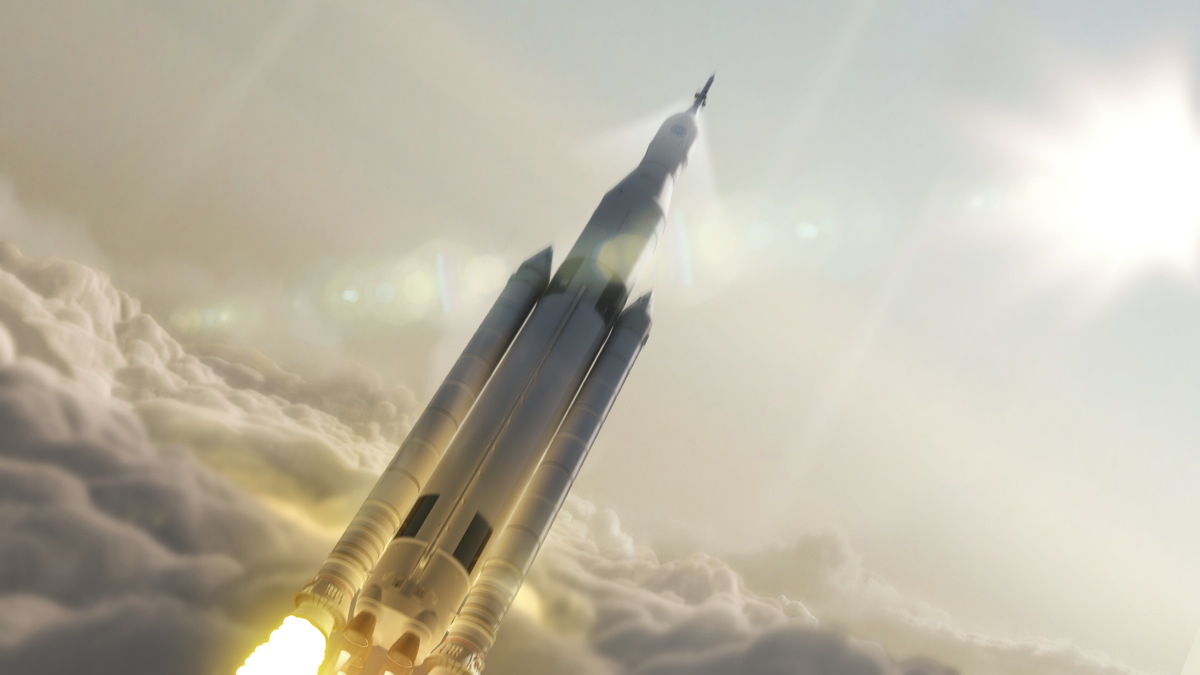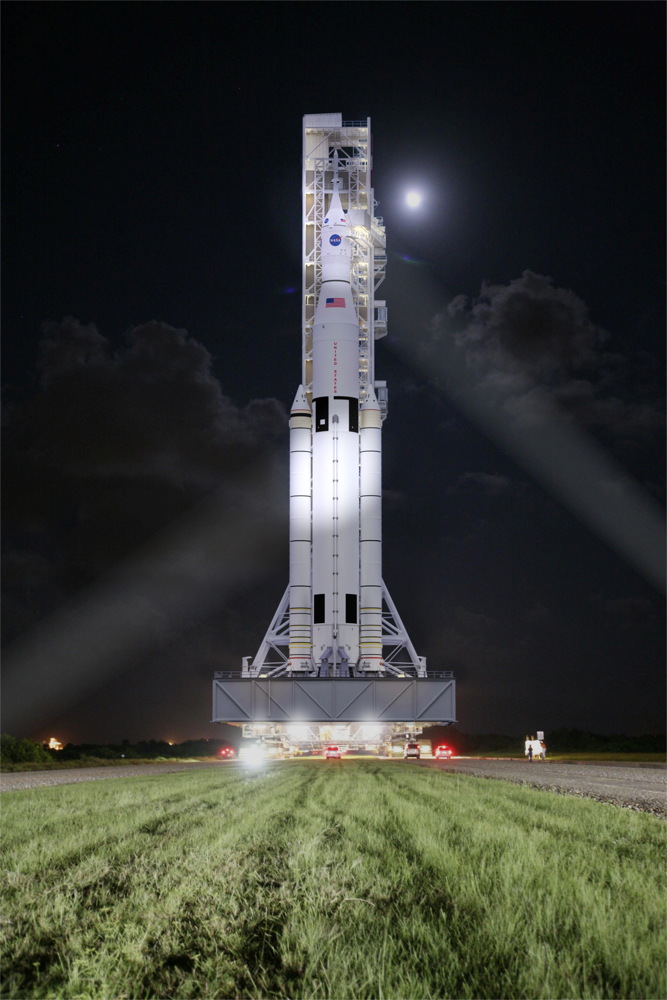NASA's New Mega-Rocket for Deep Space Will Be Launch Ready by 2018

NASA new mega-rocket, a towering booster designed for deep space missions, will be ready for its first test flight no later than November 2018, space agency officials announced Wednesday (Aug. 27).
It's possible that the Space Launch System rocket test flight could launch as early as December 2017, but NASA officials have committed to having the rocket ready for flight be the end of 2018 to be safe. That extra wiggle room should let the space agency cope with scheduling and funding issues as they crop up in the future, NASA officials said in a teleconference with reporters.
The SLS will be the largest rocket ever constructed and it is designed to send humans deeper into space than ever before. The huge launcher — which will stand at 400-feet-tall (122 meters) in its final configuration — could deliver NASA astronauts to an asteroid and even Mars sometime in the future. [See images of NASA's SLS rocket design]
"Our nation is embarked on an ambitious space exploration program, and we owe it to the American taxpayers to get it right," NASA associate administrator Robert Lightfoot, said in a statement. "After rigorous review, we’re committing today to a funding level and readiness date that will keep us on track to sending humans to Mars in the 2030s – and we’re going to stand behind that commitment."
NASA expects that SLS will cost a total of $7 billion from February 2014 through November 2018. For its first test flight, SLS will fly out of low-Earth orbit with an unmanned Orion space capsule.
The SLS team just passed a major design review, which will allow the program to move forward with design plans.
The 2018 date is a reflection of modeling done by a review board, which suggested that the new date is likely more attainable, NASA officials said during a news conference today (Aug. 27). The review board looked at the SLS plan and brought up problems that could arise during the building of the rocket system, possibly causing a change in schedule.
Breaking space news, the latest updates on rocket launches, skywatching events and more!
"They're [the review board] telling us that if we don't do anything, we basically have a 70 percent chance of getting to that date," William Gerstenmaier, NASA's associate administrator for the Human Explorations and Operations Mission Directorate, said during the news conference. "Our intent and the team's intent at Marshall [Space Flight Center] is to go look at those problems and see what we can do to mitigate those problems."
"There are probably some other problems that aren't even identified by the Standing Review Board that will come up," Gerstenmaier added. "Our job as a management team is to look at those problems, figure out ways to work those ahead of time, and proactively work those as they come about."
It's possible that the first SLS flight could occur before the 2018 target if the team works to head off any potential issues before they occur, according to Gerstenmaier.
Follow Miriam Kramer @mirikramer and Google+. Follow us @Spacedotcom, Facebook and Google+. Original article on Space.com.

Miriam Kramer joined Space.com as a Staff Writer in December 2012. Since then, she has floated in weightlessness on a zero-gravity flight, felt the pull of 4-Gs in a trainer aircraft and watched rockets soar into space from Florida and Virginia. She also served as Space.com's lead space entertainment reporter, and enjoys all aspects of space news, astronomy and commercial spaceflight. Miriam has also presented space stories during live interviews with Fox News and other TV and radio outlets. She originally hails from Knoxville, Tennessee where she and her family would take trips to dark spots on the outskirts of town to watch meteor showers every year. She loves to travel and one day hopes to see the northern lights in person. Miriam is currently a space reporter with Axios, writing the Axios Space newsletter. You can follow Miriam on Twitter.


